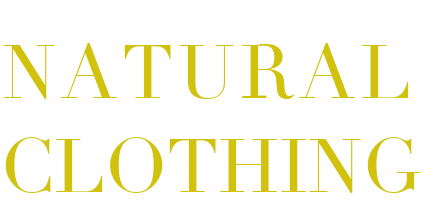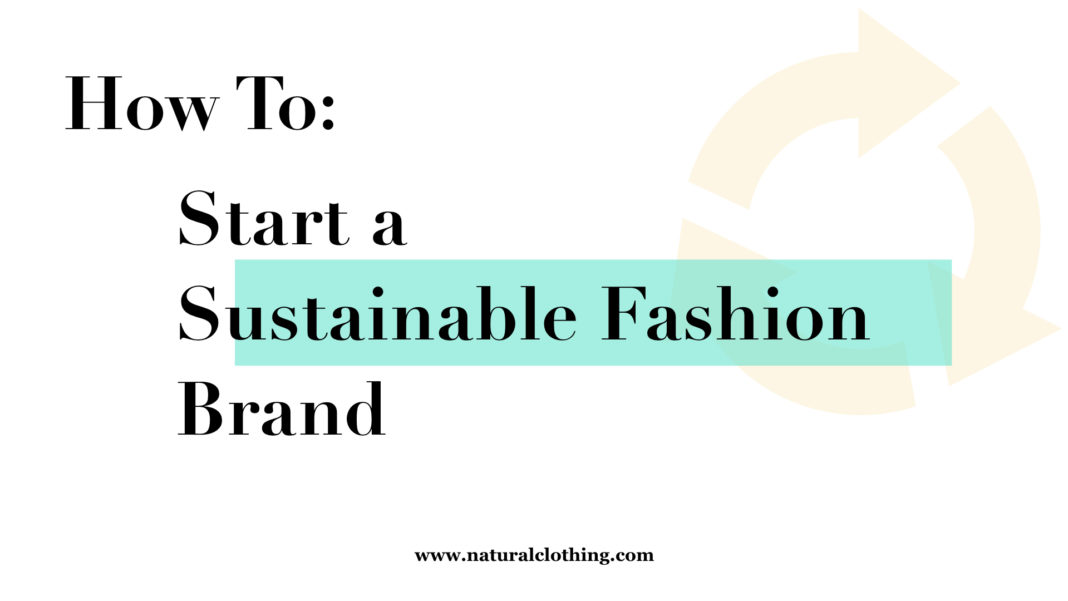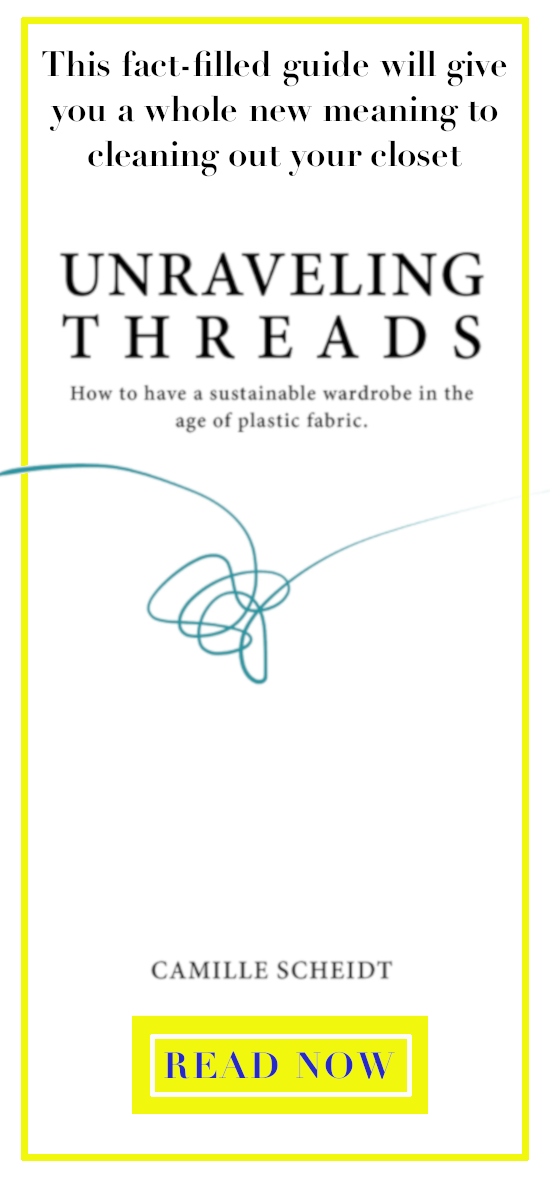Sustainable fashion isn’t a trend. It’s a shift in the way we design and consume. Get ahead of the change.
Below you’ll find a basic outline of your first steps to take in starting a sustainable fashion brand. Explore the rest of this site for more detailed information about the fabrics mentioned here, including how they’re made, their benefits, their drawbacks, and their environmental impact.
1 · Concepting: Sustainable, but make it fashion. Fashion, but make it sustainable.
Outline the concept of your sustainable fashion label. Why are you creating this line? During this first step, start big before you go small and start basic before you get complex. You’ll create a stronger concept if you thoroughly explore your big ideas before you define the small nuances. A few key points to include in a sustainable fashion label concept from the get go are: environmental responsibility and social responsibility. These two points are crucial to include in your planning, but as I’ll explain later, they are not the definition of your brand. Now, let’s take a look at what these responsibilities entail.
First, let’s look at the environmental responsibility of a sustainable fashion brand. Environmental responsibility in the fashion industry includes attention to every phase of an article’s lifespan. This goes beyond the source of the material and the entire line of production and manufacturing. You need to be ready to account for the sales messaging, the item’s effects during use, and the disposal of the item once the consumer is ready to discard it. This second half of a clothing item’s lifespan is easy to overlook, but crucial in creating a sustainable line with true integrity. Questions to answer here include:
-
- How many seasons will you release a year? 1-2 or 8?
-
- How can consumers wash your product? Is it dry clean only and does it release microfibers?
-
- How long will your customer keep your product?
-
- Is your product biodegradable?
- Will you organize or promote some sort of repair or exchange program?
So, your brand must embody these responsibilities to the environment, the consumer, and the creators, but this next point is an essential one. One of the most important things to understand when creating a successful sustainable fashion brand, is that ‘sustainability’ is not your concept. Nor is ‘environmentally friendly’, ‘eco-_________’, or ‘green’. You’ll fall into a greenwashed void with this misstep. The market is already saturated with plenty of self-claimed ‘sustainable’ brands. These brands are unremarkable from each other and many of them are not true to their marketing. These brands are also drastically underestimating their consumer. Your consumer knows better and your consumer cares. A brand’s purpose is a significant purchase trigger. Belief driven buying is now a mainstream habit for consumers. In 2018, 64% of consumers worldwide made purchase choices based on the brand’s standing on social and political issues. Your brand’s purpose will drive these belief driven purchasers both in their purchasing of and advocacy for your brand. Your consumers will be your best marketing.
To create a headline making sustainable fashion label, create a headline making fashion label.
Instead, build your dream fashion brand and make it sustainable. It isn’t enough to merely draw up a line of hemp tees and bamboo sunglasses (though hemp is a fantastic sustainable textile option that we’ll explore later). To create a headline making sustainable fashion label, create a headline making fashion label.
2 · Sourcing: Sustainable Fabric & Ethical Labor
Your two main sourcing questions to answer while sourcing will be ‘what?’ and ‘from where?’. What fabrics will you use to ensure the lowest possible environmental effects? From where will you source the fabric, construction, and assemblage to ensure that your brand is socially responsible and supports an ethical and transparent supply chain? It’s important to not compromise during this stage.
The Best Fabrics for a Sustainable Fashion Line
First, let’s dive into fabric. The good thing with sourcing sustainable textiles is that there are some clear do’s and don’ts. Natural fiber fabrics will be your staples, semi-synthetics are somewhat of a grey area, and synthetics are off limits. Let’s start with the most sustainable fabrics: the natural fibers.
Natural Fiber Fabrics
Natural fabrics include hemp, linen, organic cotton, silk, and wool. These fibers come from all natural sources (plants and animals), require minimal processing, typically have a long product life, and are biodegradable. Their source, manufacturing, and end-of-life phases have a much lower impact on the environment than synthetic fabrics.
Natural fiber fabrics also offer a host of benefits to your consumer. They typically last longer, are more resistant to pilling and snags, and are far less prone to harbor odor causing bacteria. In fact, some natural fiber fabrics, like hemp, just get better with age. Hemp can even be grown and processed using methods that produce a carbon-negative fabric – find out more about hemp fabric here. If you’re wondering about the hand of natural fiber clothing, rest assured, the comfort level of natural fiber fabrics is also superior to synthetic fabrics. Natural fiber fabrics boast optimal temperature regulation, moisture wicking, antimicrobial properties, and a softer hand. With these benefits it sounds like your marketing is almost done for you.
Semi-Synthetic Fabrics
Before we talk about synthetic fabrics, we need to address the in-betweens: semi-synthetic fabrics. Semi-synthetics are sourced from natural sources, but the fibers are processed intensively. Ultimately, with semi-synthetics, the sustainability of the fabric depends on the processing of the fiber. In this camp, you have lyocell (brand name Tencel) which is a very sustainable fiber and you also have bamboo rayon which can be a very polluting fabric. Bamboo is a fast growing plant and the fiber is a prime candidate to become a sustainable fabric. Unfortunately, bamboo is often treated with rayon or viscose processing methods. These methods often use harsh chemicals and can result in a fiber and textile that is more susceptible to snags, pilling, and wear. If you’re making bamboo clothing, you’ll need to research the methods of harvesting, processing, and manufacturing to ensure it’s a sustainable bamboo fabric. So what does that look like?
What you’re looking for in a sustainable semi-synthetic is a fiber that is processed in a closed loop system. This means that all chemicals used in the process are reclaimed and reused. You’re also looking for an end product with durability and a satisfactory hand. These last two are not mutually exclusive. In fact, you can find all of these things (closed loop processing, durability, and a variety of hands) in two semi-synthetic fabrics in particular: lyocell and cupro. Unless you’re willing to do your research, don’t bother with the other semi-synthetics like rayon, viscose, or bamboo fabric. As I said before, more often than not the processing for rayon and viscose is less than sustainable and the product itself is less durable than you’ll need to create your sustainable fashion line. Because remember, your clothing needs to make it through the customer’s wash more than once.
Synthetic Fabrics
Now, on to the plastic. You cannot have a sustainable clothing brand with plastic fibers. By plastic I’m referring to synthetic fabrics. Synthetic fabrics include polyester, polyamide, nylon, and acrylic. Synthetic fabrics are made from fossil fuels (natural gas, oil, and coal). The sourcing, processing, and manufacturing of synthetic fabrics is dirty and polluting. Once in customers hands, synthetic fabrics continue to pollute. Every time synthetics are washed, they release plastic microfibers into the waterways. The plastic microfibers then make their way into lakes, streams, oceans, beaches, fish and friends, tap water, agricultural fields, and our own bellies and lungs. These plastic microfibers are not biodegradable and we currently have no way to effectively clean them up. Fast fashion (and the whole athleisure trend) has released a plague of plastic upon our world. Further, once it’s thrown away, synthetic clothing is not biodegradable. Synthetic clothes take decades to centuries to break down and when it does break down it creates compounds that are harmful to our health and our ecosystem. Because of these polluting factors in the use and after-use phases of the clothing’s lifespan, plastic is off limits.
Recycled Synthetic Fabrics & Sustainable Swimwear
There is one and only one exception to using synthetics in sustainable clothing and that is: swimwear. This is because swimwear does not get run through agitating laundry cycles as often (or ever) as other clothing and therefor releases far fewer microfibers. The use phase of this cycle for swimwear thus has a much lower impact. If you are creating a swimwear line, then check out my article on recycled synthetic fabrics. As soon as you get your hands on one swatch of recycled synthetic fabric, you’ll forget the virgin nylons and polyesters immediately. Brands like Econyl and Yulex have created recycled synthetics that are comparable and in some cases superior to many of their virgin counterparts in durability, color retention, elasticity, and hand.
go natural
Your main takeaway for choosing materials: go natural.
Ethical Labor and Your Sustainable Fashion Line
Once you’ve decided which of these sustainable fabrics suit your needs the best, you’ve answered your ‘what’. Now, your question becomes ‘from where’. Sourcing the materials and the right manufacturing and assembly solutions can be the most difficult part of this process. But rest assured, once you’ve secured your supply chain and built a strong conduit of communication, the heavy lifting is over.
It’s imperative to not let any sustainability or ethical standards slip in this phase of your product. Use this simple checklist when seeking suppliers and manufacturers:
- transparency in ethical and fair trade working conditions and workers’ rights
- closed loop processing for chemical treatments and dyes
- responsible waste management
- energy and water conservation
For more information on fair trade regulation and ethical working places check out my article here.
For an example of a factory that checks off every item on this list, check out denim supplier SAITEX or lyocell manufacturer Lenzig with Tencel.
3 · Develop your Concept Further
Now with sourcing out of the way, focus on the details. This is the time to refine and elevate your label. Push the bounds of the materials you’ve selected and make a product that will captivate your consumer. This is when the concept of your brand becomes a defined purpose. You should be able to refine your purpose into one strong statement sentence.
refine your purpose into one strong statement sentence
This is also the stage to formulate a strong marketing message and plan. How can you most effectively convey the ethos of your brand? How can you pique the interest of the consumer?
During this phase, it’s important to note that everything about your brand must be the opposite of disposable. From the quality of the fabric, to the construction, to the packaging, to the messaging of launches, seasons, and sales: design it to last and make it to last. We used to have a great term for things that were created to last, we called them ’classic’. Think of the great canons of fashion and Dior, Diane von Furstenberg, and Bottega Veneta will pop into your mind. Items from these brands are treasured and passed from generation to generation. They have lasting value. When remarking on these timeless design houses, brands that hawk disposable fast fashion like Forever21 will be far from your mind. Remember this distinction further on down the road when you may be tempted to stray from your brand’s purpose.
4 · Promote
Figure out where your target demographic is and go hard in that arena. Are you starting a local brick and mortar or an international online empire? Don’t just make an Instagram page and call it a day. Your target consumer may not engage with Instagram or even have social accounts. And as I mentioned before, certain areas, such as Instagram, are hyper-saturated with greenwashed apparel accounts.
Locating your consumers before launching campaigns will optimize the time and money you budget for marketing. If social platforms are your target, you’ll need to create a campaign that will break through the noise. Your campaign should be targeted and convey a concise message that is consistent with your brand’s purpose. Create images and phrasing that captivate and inspire your consumer to invest in your brand. Don’t just post pictures of eucalyptus or monstera leaves in a white bright room. Be the next eucalyptus/monstera leaf in a white bright room trend.
If your consumers are not on social, you should still establish some online presence. Minimally, you should create a landing page including an email collection form. This is a great way to start organizing your list of interested customers.
5 · Stay True to Sustainability and Your Brand
With all of the resources available to your consumers today, don’t cut corners. They’ll know. And they’ll leave a review. Brand accountability is more important today than ever. As I said before, your customer is your best marketing. They will, quite literally, carry your brand’s purpose on their shoulders.
Feel free to contact me with any questions regarding this quick guide.













